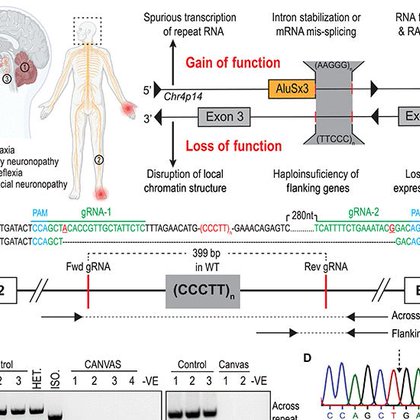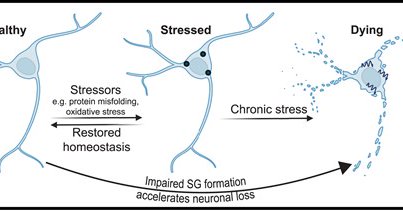
Connor Maltby
@connor_maltby
Followers
1K
Following
18K
Media
333
Statuses
2K
Molecular Neuroscientist from 🇬🇧 | PhD @UniSouthampton 🦌 | Postdoc @UMich Neurology 〽️🇺🇸 | Currently in vitro Team Leader @UlyssesNeuro 🧠🇮🇪
Dublin City, Ireland
Joined February 2015
New paper from my postdoc work at @UMichResearch is now out in @ScienceAdvances 🎉 very proud to share the culmination of nearly 4 years of hard work with a fantastic group of colleagues and collaborators. A 🧵 of what we found out about RFC1/CANVAS 👉.
science.org
Functional analysis of human CANVAS neurons reveals a repeat-dependent but RFC1 protein–independent cause of neuronal dysfunction.
2
9
38
Big thanks to all who contributed to getting this work out, it’s been a pleasure investigating this mysterious disease. @realToddLab @BarmadaLab @DrAnkeDijkstra @AP_Boyle.
0
2
2
RT @realToddLab: Ever wonder if stress granules are intrinsically good or bad in neurodegeneration? Our new paper uses a unique tool to add….
academic.oup.com
Abstract. Cellular stress pathways that inhibit translation initiation lead to transient formation of cytoplasmic RNA/protein complexes known as stress gra
0
24
0
RT @EUdelegationUK: 📣Exciting news: the @ERC_Research awarded its Proof of Concept grants to 15 UK projects, the first since the UK joined….
0
138
0
New @AP_Boyle and @realToddLab collaboration is now up on @medrxivpreprint 🥳 we used targeted long read sequencing and HMMSTR to successfully identify and genotype known or suspected large tandem repeat expansions at many loci in patient derived samples.
medrxiv.org
Tandem repeat sequences comprise approximately 8% of the human genome and are linked to more than 50 neurodegenerative disorders. Accurate characterization of disease-associated repeat loci remains...
0
4
13
Feeling incredibly lucky to have been situated in the US today for the #TotalEclipse. What a surreal experience 😦
0
1
32
Another beautiful Cryo-EM paper from @GraceHallinan @avfernandezr & team, this time showing that Tau fibrils in individuals with both Down Syndrome and Alzheimer’s Disease show the same structural conformation as those with sporadic AD 🤌🏽🧠.
Our paper on tau and amyloid beta in Down syndrome is out! We hope this data can lead to the inclusion of people with Down syndrome in Alzheimer's disease clinical trials
0
5
23
RT @realToddLab: Really honored to be a speaker at this year's one-day FREE Michigan RNA symposium with an incredible lineup of speakers- i….
0
6
0
























